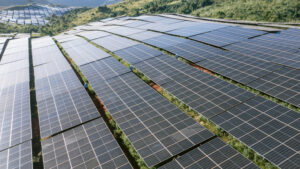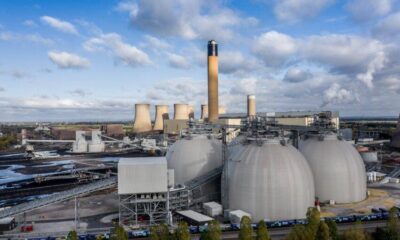Business
Can solar energy be farmer-friendly?

As technological breakthroughs have revealed the potential of solar energy as an electricity source and scaled up its development in countries looking to decarbonize their energy systems, opportunity costs in land use have inevitably emerged. Although sunlight can be inexhaustible during sunny days, solar energy installations require a lot of land, with a particular preference for flat, sunny areas that are also typical of the fields used for agriculture.
In the Philippines, a net importer of food and energy, the growth of solar photovoltaic (PV) technology is expected to take up significant agricultural space. As a rule of thumb, one hectare of land can be used to build a megawatt of solar energy capacity or produce about four tons of rice annually.
The Philippine context
As of May 2024, solar power accounted for 8% of installed capacity and 3.8% of gross electricity generation in the Philippines. With the target to increase the share of renewable energy in the energy generation mix from 22% to 50% by 2040 under the Department of Energy’s (DoE) Clean Energy Scenario, installed solar capacity is expected to reach 39% of the energy pie to fill. which requires growth that is twenty times greater than now.
According to the Department of Energy (DoE), expanding the share of solar energy to the expected gigawatts will require 46,140 hectares of land, with agricultural plains at risk of being reduced as this is the most viable land for capturing solar radiation. For context, the land area required is equal to about 2.86 times the land area of Quezon City, the largest city in Metro Manila, and about three-fifths of Singapore.
When comparing the land use of energy sources per unit of electricity – which also takes into account a life cycle analysis from the extraction of materials to the processing of waste – a foreign study found that ground-installed solar PVs consume 19 square meters per megawatt hour. (MWh) when made of silicon. For comparison: a gas power plant uses only 1 square meter per MWh.
Because solar PVs are more land intensive, capital costs are consequently high and land leases can consume almost a fifth of operating costs.
Recognizing the importance of both food and energy in supporting economic growth and development, the DoE emphasized the need for agricultural land use policies to mitigate the negative impact of solar power plant development on food security.
The Philippines already bears supply and price risks as a net importer of food. In 2022, agricultural imports amounted to 14.1% of total imports, contributing to an agricultural trade imbalance of US$11.8 billion. The following year, 2023, agricultural imports made up 14.2% of all imports, leading to an agricultural trade deficit of $11.5 billion.
Meanwhile, the Philippines is also a net importer of energy. While the country’s primary energy supply mix as of 2022 consisted largely of indigenous energy (49.4%), net imported oil (31.6%) and coal (18.6%) also played a significant role in the mix. Furthermore, 59% of gross generation in the Philippines is still produced by coal, compared to only 22% from all renewables combined.
The appeal of harnessing indigenous resources such as solar energy in the Philippines is not only driven by decarbonization efforts. Even prior to a moratorium on green energy projects, the use of indigenous and renewable sources was already seen as a way to reduce dependence on imported energy, as expressed in the Electric Power Industry Reform Act of 2001.
Farmer-friendly solar power plants
Amid this brewing land use dilemma, tremendous ingenuity has emerged among manufacturing companies and service providers seeking to expand solar power generation in the Philippines with as little farmer displacement as possible.
Some solar facilities chose to combine solar energy generation and agriculture on the same land by growing crops under or next to solar panels. Several have built “floatovoltaics,” or floating solar arrays, which are solar panels on bodies of water such as lakes and dams.
Then there are energy producers that are not located on agricultural land or bodies of water at all. A growing number of end users have taken the opportunity to install solar panels on their roofs to save on energy costs. At the same time, larger producers have also focused on repurposing non-developmental, rolling land instead of arable land.
Notably, the 159 megawatt peak (MWp) Laoag and the 94 MWp Cayanga-Bugallon solar power plants in Pangasinan fall into the latter’s category as both are built on non-agricultural land and have recently been energized to provide high levels of energy. additional power needed for the Philippine electricity grid. Both projects belong to Aboitiz Renewables, Inc., the renewable energy arm of Aboitiz Power Corp.
Although the topography is not the ideal flat surface typical of solar power generation, both facilities can still provide approximately 200 megawatts of total salable capacity. Laoag recently started exporting power to the grid, helping to increase overall supply, as yellow and red alerts haunt the country’s main power grids.
While more solar panels offer a promising solution for clean energy and energy independence, it also ultimately poses potential competition for farmers looking to preserve their land. Private developers and policymakers should look closely at the direction of food security amid the shift to cleaner energy sources.
Spotlight is BusinessWorld’s sponsored section that allows advertisers to build their brand and connect with BusinessWorld’s audience by publishing their stories on the BusinessWorld website. For more information, please email online@bworldonline.com.
Join Viber on https://bit.ly/3hv6bLA to get more updates and subscribe to BusinessWorld’s titles and receive exclusive content www.bworld-x.com.









